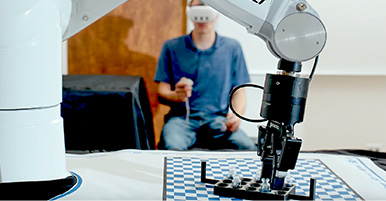Citation
Romero P., Karp P.D. Using Functional and Organizational Information to Improve Genome-Wide Computational Prediction of Transcription Units on Pathway/Genome Databases. Bioinformatics, vol. 20, pp. 709-17, 2004.
Abstract
Motivation
The prediction of transcription units (TUs, which are similar to operons) is an important problem that has been tackled using many different approaches. The availability of complete microbial genomes has made genome-wide TU predictions possible. Pathway-genome databases (PGDBs) add metabolic and other organizational (i.e. protein complexes) information to the annotated genome, and are able to capture TU organization information. These characteristics of PGDBs make them a suitable framework for the development and implementation of TU predictors.
Results
We implemented a TU predictor that uses only intergenic distance and functional classification of genes to predict TU boundaries, and applied it to EcoCyc, our PGDB of Escherichia coli. To this original predictor, we added information on metabolic pathways, protein complexes and transporters, all readily available in EcoCyc, in order to generate an enhanced predictor. The enhanced predictor correctly predicted 80% of the known E.coli TUs (69% of the known operons), a moderate improvement over the original predictor’s performance (75% of TUs and 65% of operons correctly predicted), demonstrating that the extra information available in the PGDB does indeed improve prediction performance. Performance of this E.coli-based predictor on a genome other than that of E.coli was tested on BsubCyc, our computationally generated PGDB for Bacillus subtilis, for which a set of 100 known operons is available. Prediction accuracy decreased substantially (46% of the known operons correctly predicted). This was due in part to missing information in BsubCyc, which prevented full use of the predictor’s features. The augmented predictor has been implemented as part of our Pathway Tools software suite, and can be used to populate a PGDB with predicted TUs.
Availability
The TU predictor is included in version 7.0 of the Pathway Tools software suite. Pathway Tools 7.0 is available free of charge to academic institutions and for a fee to commercial enterprises. It runs on Sun Solaris 8, Linux and Windows. TUs predicted on the Caulobacter crescentus and Mycobacterium tuberculosis (H37Rv) genomes are available in our CauloCyc and MtbrvCyc databases, available at the BioCyc web site (http://biocyc.org). To obtain version 7.0 of Pathway Tools, follow the directions in our web site, http://biocyc.org/download.shtml.
Keywords: Artificial Intelligence, Artificial Intelligence Center, AIC


